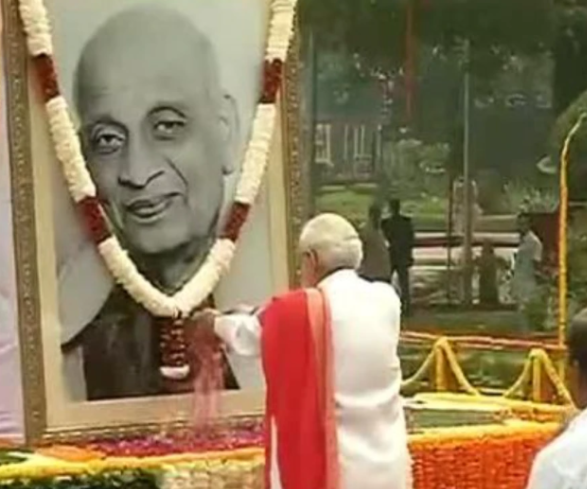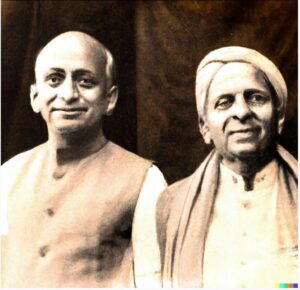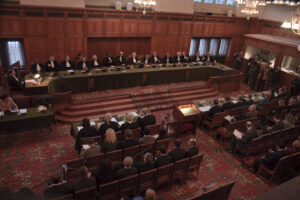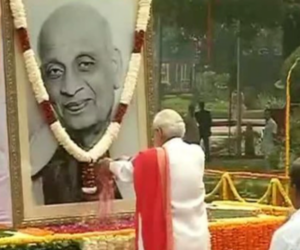
In the mosaic of India’s political and historical landscape, few figures have been as pivotal as Sardar Vallabhbhai Patel, fondly known as the Iron Man of India. A key architect of modern India, Patel played a seminal role in the nation’s integration post-independence, unifying over 560 princely states into a single cohesive entity. Against this backdrop, Prime Minister Narendra Modi’s emphasis on Patel’s legacy invites scrutiny. As political narratives evolve and historical figures are revisited for contemporary significance, understanding Modi’s focus on Patel becomes crucial, not just for its historical relevance but also for the implications it holds for present-day India. Here’s an analysis of this perspective:
Addressing Intrastate Politics: Replacing Patel CMs
It all started as a diversionary tactic in Gujarat. Before Narendra Modi’s ascent in Gujarat’s political landscape, influential chief ministers from the Patel community, such as Keshubhai Patel, held significant sway. Modi’s rise to power involved the displacement of strong Patel leaders within the BJP. Following Modi’s tenure as the Chief Minister, Gujarat witnessed substantial Patidar agitations, indicative of discontent within a dominant community base.
By placing a renewed emphasis on Sardar Patel’s legacy, Modi is making a dual move. First, it’s a nod to the Patidar community, acknowledging the value the BJP places on their historical icons. This approach also works to pacify any potential grievances that might have arisen from the sidelining of Patel leaders in the state’s political hierarchy. It’s a strategic maneuver to harmonize intrastate politics, ensuring that community dynamics remain favorable.
An Attempt to Shift the Historical Narrative away from Nehru?
1. A Counter-narrative to Nehru’s Leadership
The Nehru-Gandhi family has been a significant political force in India, with a deep-rooted legacy dating back to the freedom struggle. Over the decades, the family and its political party, the Indian National Congress (INC), have played a central role in shaping India’s history and its global image.
By emphasizing Patel’s contributions, the BJP, under Modi’s leadership, might be seeking to broaden the scope of India’s leadership narrative, spotlighting leaders who played crucial roles in the country’s formation but perhaps did not receive as much attention in mainstream history narratives.
2. Highlighting Differences in Vision
While both Nehru and Patel were instrumental in India’s early post-independence journey, they had different visions on various issues, ranging from foreign policy to the role of the private sector and traditional institutions. By emphasizing Patel’s contributions and ideals, the BJP might be highlighting an alternative vision of India’s foundational years, one that contrasts with Nehru’s socialist and secular ideals.
3. Claiming a Broader Nationalistic Legacy
The BJP’s roots are in the Rashtriya Swayamsevak Sangh (RSS), a right-wing, Hindu nationalist organization. By associating more closely with Patel, who had a more conservative view on certain issues, the BJP can claim a broader nationalistic legacy that encompasses figures outside its traditional ideological lineage. This allows the party to argue that its vision for India has historical precedents and is not merely rooted in its association with the RSS.
4. Political Rivalry and the Congress Legacy
The BJP and the Congress party have been primary political adversaries for decades. By focusing on Patel over Nehru, the BJP can challenge the traditional Congress narrative. This can be seen as a tactic to question the Congress party’s claim as the sole inheritor of India’s freedom struggle legacy.
5. Addressing Contemporary Political Realities
It’s essential to consider contemporary politics when analyzing Modi’s emphasis on Patel. By challenging the Nehru-Gandhi legacy, the BJP might be seeking to diminish the political capital of the present-day Nehru-Gandhi family members, who are active in politics, such as Rahul Gandhi and Priyanka Gandhi Vadra.
Why Mahatma Gandhi’s Legacy is Untouched :
Gandhi, known as the “Father of the Nation”, holds a unique position in India’s conscience. Despite being intrinsically linked with Nehru, Gandhi’s legacy remains largely untouched by Modi even though Gandhi took the elevation of Nehru at the expense of Patel. Several factors contribute to this:
- Universal Reverence: Gandhi’s principles of ahimsa (non-violence) and satyagraha (truth-force) transcend political affiliations. His teachings, revered both domestically and internationally, provide a common ground for leaders across the spectrum.
- Gujarati Pride: Both Modi and Gandhi hail from Gujarat. Recognizing Gandhi’s stature, Modi taps into a shared regional pride, reinforcing his connection with his home state.
- Strategic Silence: By not engaging directly with Gandhi’s legacy, Modi avoids alienating segments of the population who hold deep reverence for the Mahatma, while also steering clear of potential international ramifications.
- The Diplomatic Dance: Gandhi on the Global Stage: Gandhi’s global image as a symbol of peace makes him an invaluable figure in India’s international diplomacy. Modi, aiming for a robust global presence, often references Gandhi’s ideals on world platforms. Be it the International Day of Non-Violence, commemorated on Gandhi’s birthday, or the push for environmental sustainability echoing Gandhi’s teachings, the global appeal of the Mahatma is a diplomatic asset.
Crafting Future Narratives: The Role of Institutions and Memorials
Modi’s initiative to build the ‘Statue of Unity’ dedicated to Patel stands as a testament to this revised narrative. As the world’s tallest statue, it symbolically elevates Patel’s stature in India’s historical and political discourse. Such monumental gestures indicate a broader strategy of shaping public memory, guiding future generations in their understanding of the past.
Conclusion:
The legacies of historic leaders are not just reflections of the past but are powerful tools in contemporary politics. Modi’s approach to the narratives of Patel and Gandhi showcases the intricate dance of political strategy, regional dynamics, and international diplomacy. As India continues its journey, the stories of its leaders will remain pivotal, shaped, and reshaped by the leaders of today.
Reference Materials:
- Books & Biographies:
- Rajmohan Gandhi. (1991). Patel: A Life. Navajivan Publishing House.
- Durga Das. (2000). Sardar Patel’s Correspondence 1945-50. Navajivan Publishing House.
- Government Publications & Documents:
- Ministry of Culture, Government of India. (2018). The Making of the Statue of Unity.
- Speeches of Prime Minister Narendra Modi (Available on the official website of the Prime Minister’s Office).
- Journals & Scholarly Articles:
- Kapoor, R. (2015). Sardar Patel and his India. Indian Historical Review, 42(1), 1-14.
- Desai, A. V. (2005). Legacy of Vallabhbhai Patel: A critical analysis. Journal of Indian History and Culture, 12, 95-108.
- Newspapers & Magazines:
- Articles from prominent Indian newspapers like The Hindu, The Times of India, and The Indian Express highlight Narendra Modi’s speeches and references to Sardar Patel.
- Profiles and Op-Eds in magazines like India Today, Outlook, and Frontline discuss the political significance of Sardar Patel in current politics.
- Online Resources:
- Official website of the Prime Minister’s Office for press releases, speeches, and official communications.
- Archive sections of major Indian news websites for specific events or speeches related to Sardar Patel by Narendra Modi.
- Interviews & Multimedia:
- Interviews of Narendra Modi where he has spoken about Sardar Patel. These can be found on platforms like YouTube or official news websites.
- Documentaries or historical retrospectives on Sardar Patel, his contributions, and his recent prominence in political discourse.




